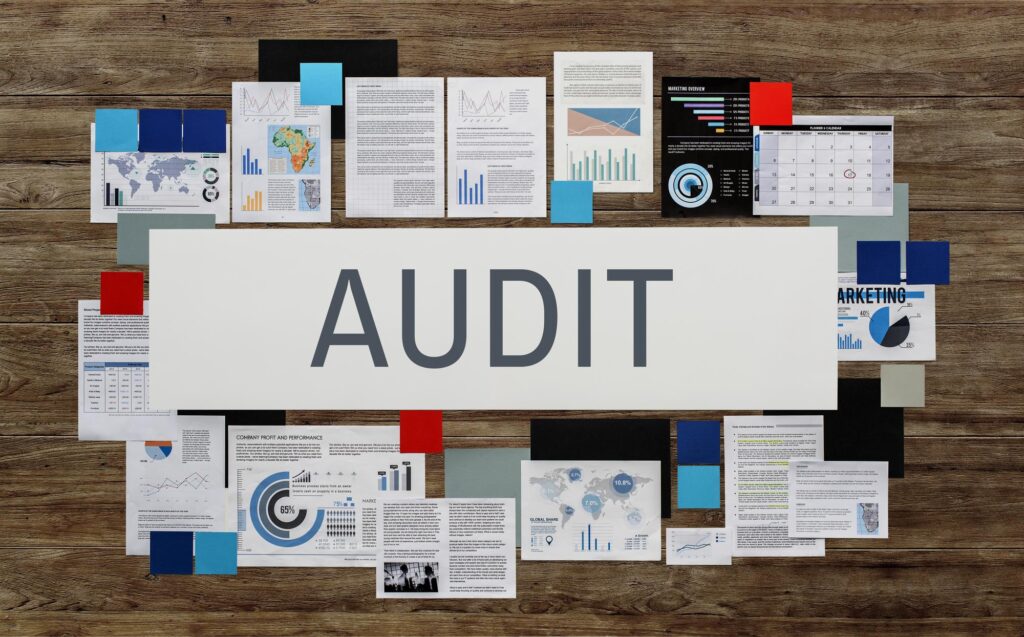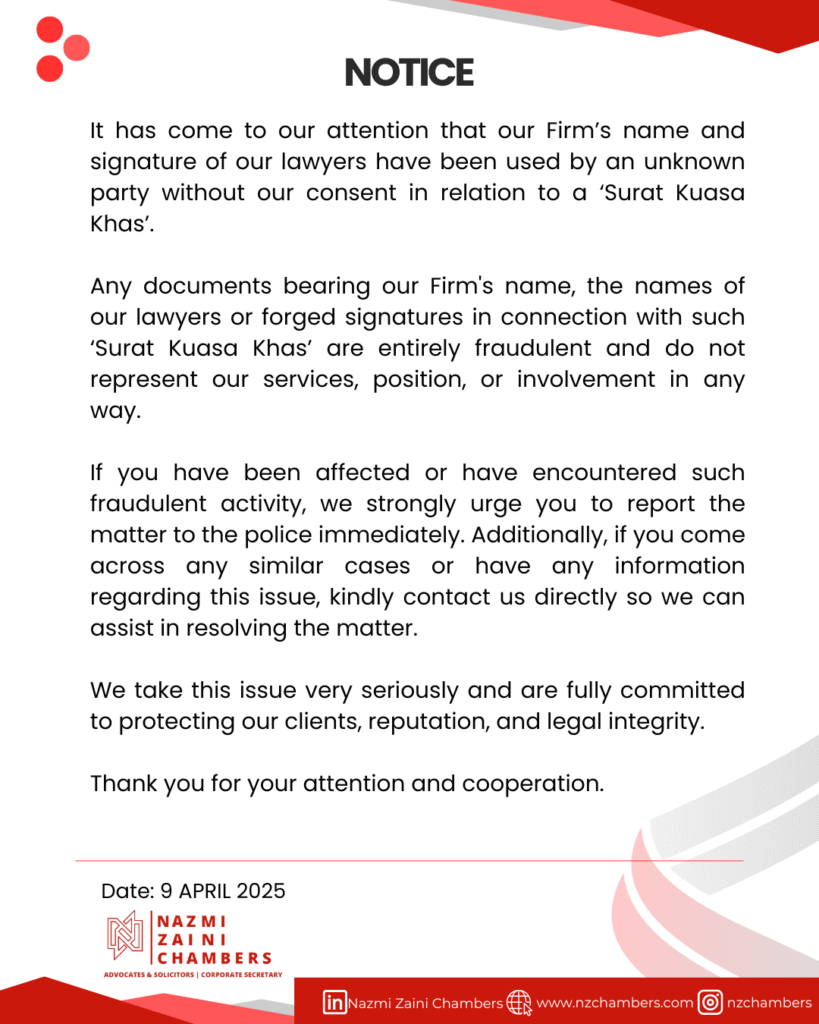Pursuant to the Malaysian regulatory framework, any person intending to establish or operate a recognised market, such as digital asset exchanges, equity crowdfunding platforms, or peer-to-peer financing platforms, is required to submit an application to the Securities Commission Malaysia (“SC”) for registration as a Recognised Market Operator (“RMO”) and to comply with the requirements prescribed under the Guidelines on Recognised Markets (“RMO Guidelines”).
The RMO guidelines promulgated by the SC, constitute the principal regulatory framework governing alternative market operators, including Digital Asset Exchanges (“DAX”). The SC oversees DAX to ensure that they operate safely and safeguard the interests of investors. This regulatory role is central to shaping the country’s digital asset ecosystem. All exchanges are required to register with the SC, comply with stringent governance standards, observe the Anti-Money Laundering, Anti-Terrorism Financing and Proceeds of Unlawful Activities Act 2001 (AMLA) together with the relevant SC’s guidelines requirements, while ensuring the protection of customer assets. Through this oversight, the SC sets the standard for a more secure and dynamic digital asset ecosystem by striking the ideal balance between investor protection and innovation.
RECOGNISED DAX IN MALAYSIA
At present, six licensed exchanges operate under the RMO Guidelines: Luno Malaysia, SINEGY DAX, Tokenize Technology (M), MX Global, HATA Digital and Torum International[1]. Notably, MX Global received an equity investment from Binance, highlighting growing global interest and confidence in Malaysia’s regulated digital asset exchange sector.[2]
This development aligns with the rising domestic demand for digital assets, particularly among younger investors who increasingly view cryptocurrencies as attractive investment opportunities. As former SC Chairman Dato’ Seri Dr Awang Adek noted: –
“We know there are always people who want to invest in digital assets. This digital assets world will stay with us whether we like it or not. If we don’t approve and regulate this space, transactions will be done outside of our regulation and unregulated parameters, and that will be more difficult for us.” [3]
This underscores both the inevitability of digital assets and the need for a robust, forward-looking regulatory framework. In light of this viewpoint, the SC has taken the initiative to publish a consultation document seeking public input, giving interested parties a chance to help shape Malaysia’s regulatory framework for digital assets. For instance, in order to get public input on suggested improvements to the regulatory framework for DAX, the SC released Public Consultation Paper No. 3/2025 (“PCP 3/2025”) on June 30, 2025. Stakeholders can express their opinions to the SC during the consultation period, which ended on August 11, 2025. The PCP 3/2025 suggestions aim to improve the competitiveness of Malaysia’s regulated digital asset market while simultaneously strengthening investor protection and DAX operators’ resilience.
OVERVIEW OF THE PROPOSED AMENDMENTS
Enhancing Requirements Relating to Safeguarding Client Assets and Governance

Our Take: The SC’s proposals move from broad safeguards to clear, enforceable standards such as cold wallet thresholds, full collateralisation, and daily reconciliations. These measures aim to close gaps exposed by global DAX failures and strengthen investor confidence.

Our Take: The proposed governance measures build on existing controls by introducing independent audits, stricter custody oversight, and clear accountability within senior management. These enhancements are designed to bolster transparency and investor protection, raising DAX governance closer to regulated financial institutions.
Enhancing Requirements On DAX Operators

Our Take: The higher capital thresholds aim to ensure DAX operators have stronger buffers against market and operational risks, while giving existing operators time to comply

Our Take: The SC’s proposal ensures that majority individual shareholders bring relevant market and operational expertise, reducing risks linked to inexperienced ownership in DAX operations.

Our Take: The new measures aim to ensure DAX boards and key persons have proven competence and formal training, strengthening governance and investor confidence.
Liberalising Digital Asset Listing Process On DAX

Our Take: By shifting listing responsibility to DAX operators, the SC promotes greater autonomy with stricter accountability, while still flagging higher-risk tokens for regulatory caution.

Our Take: The expanded disclosure regime enhances transparency and investor protection, while the SC’s retained powers ensure a safeguard against abusive or high-risk listings.
IMPLICATIONS OF THE AMENDMENTS
For DAX Operators
The amendments raise the bar for DAX Operators. Stronger custody and governance rules demand secure systems, independent audits, and tighter internal controls. While these measures increase compliance costs, they directly address risks highlighted by past DAX failures.
Higher capital thresholds and new shareholder and key person requirements push operators towards greater professionalism. Smaller players may struggle to keep pace, which may drive market consolidation. At the same time, the liberalised listing process gives operators more autonomy but also greater liability, particularly if due diligence lapses occur.
For Investors
Investors stand to gain stronger asset protection. Segregated accounts, higher cold wallet holdings, and daily reconciliations reduce the risk of loss or misuse. Independent audits and SC-approved custodians further bolster trust.
At the same time, faster listings mean wider access to tokens, including higher risk assets such as meme coins and issuer controlled stablecoins. This creates more choice and liquidity but also greater volatility and retail exposure. Expanded disclosure requirements are intended to offset these risks, although their effectiveness will depend on operator compliance and investor awareness.
For Malaysia’s Regulatory Landscape
The SC is moving from prescriptive control towards risk based supervision. By shifting listing responsibilities to operators while retaining oversight powers, the framework seeks to balance innovation with investor protection.
Capital and governance enhancements align Malaysia with international standards, strengthening credibility and attracting institutional players. However, higher entry barriers may narrow participation. Overall, the amendments combine liberalisation with safeguards, signalling Malaysia’s intent to be both progressive and prudent in digital asset regulation.
CONCLUSION
The proposed amendments mark a significant shift in Malaysia’s digital asset regulatory framework. By strengthening custody, governance and capital requirements while liberalising the listing process, the SC seeks to balance innovation with investor protection. These reforms align Malaysia with international standards, enhance market integrity and position the country as a progressive yet prudent hub for digital assets in the region.
[1] (List of Registered Digital Asset Exchanges – Recognized Markets (ECF, P2P, DAX, PCF and E-SERVICES), n.d.)
[2] Binance and Cuscapi take strategic stakes in Malaysia’s MX Global. (2022, March 1). Digital News Asia. https://www.digitalnewsasia.com/startups/binance-and-cuscapi-take-strategic-stakes-malaysias-mx-global
[3] SC opens up for more crypto exchanges. (n.d.). The Edge Malaysia [https://theedgemalaysia.com/article/sc-opens-more-crypto-exchanges][1] (List of Registered Digital Asset Exchanges – Recognized Markets (ECF, P2P, DAX, PCF and E-SERVICES), n.d.)
[2] Binance and Cuscapi take strategic stakes in Malaysia’s MX Global. (2022, March 1). Digital News Asia. https://www.digitalnewsasia.com/startups/binance-and-cuscapi-take-strategic-stakes-malaysias-mx-global
[3] SC opens up for more crypto exchanges. (n.d.). The Edge Malaysia [https://theedgemalaysia.com/article/sc-opens-more-crypto-exchanges]
[4] Paragraph 15.28(c), (e), (j) of the RMO Guidelines
[5] Paragraphs 15.28(b), (h)–(i) of the RMO Guidelines
[6] Paragraph 2.5(a) of the PCP 3/2025
[7] Paragraph 2.5(c) of the PCP 3/2025
[8] Paragraph 2.5(b) of the PCP 3/2025
[9] Paragraph 2.5(d) of the PCP 3/2025
[10] Paragraph 2.1 of the PCP 3/2025
[11] Paragraph 2.2 of the PCP 3/2025
[12] Paragraph 15.06 – 15.08 of the RMO Guidelines
[13] Paragraph 15.10 – 15.14 of the RMO Guidelines
[14] Paragraph 15.15 of the RMO Guidelines
[15] Paragraph 15.28(c) of the RMO Guidelines
[16] Paragraph 15.24 of the RMO Guidelines
[17] Paragraph 2.6(a) of the PCP 3/2025
[18] Paragraph 2.6(b) of the PCP 3/2025
[19] Paragraph 2.6(c) of the PCP 3/2025
[20] Paragraph 2.6(d) of the PCP 3/2025
[21] Paragraph 2.6(e) of the PCP 3/2025
[22] Paragraph 2.6(f) of the PCP 3/2025
[23] Paragraph 15.03(b) of the RMO Guidelines
[24] Paragraph 3.6 of the PCP 3/2025
[25] Paragraph 3.6 of the PCP 3/2025
[26] Paragraph 3.7 of the PCP 3/2025
[27] Paragraph 3.4 of the PCP 3/2025
[28] Paragraph 3.11 of the PCP 3/2025
[29] Paragraph 3.10 of the PCP 3/2025
[30] Paragraph 3.12–3.13 of the PCP 3/2025
[31] Paragraph 15.16 of the RMO Guidelines; para. 4.1 of the PCP 3/2025
[32] Paragraph 4.3 of the PCP 3/2025
[33] Paragraph 4.4(a) of the PCP 3/2025
[34] Paragraph 4.4(b) of the PCP 3/2025
[35] Paragraph 4.4(c) of the PCP 3/2025
[36] Paragraph 4.5 of the PCP 3/2025
[37] Paragraph 4.8 of the PCP 3/2025





